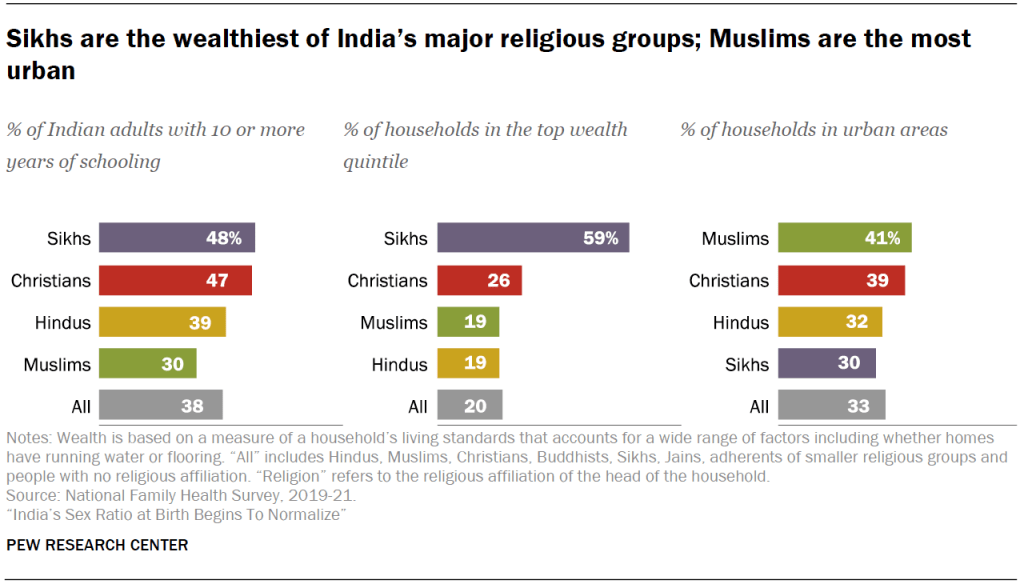In India and around the world, family patterns are usually tied to a variety of demographic measures, such as education, wealth, urbanicity and fertility. And these, in turn, are tied to religion. In other words, to understand sex selection patterns among India’s major religious communities, it is important to examine other factors that might be correlated.
Among India’s four major religious groups, Christians and Sikhs have the highest levels of educational attainment: Nearly half of these adults have completed 10 or more years of schooling, according to the 2019-21 NFHS.35 Muslims and Hindus, who together make up more than 90% of the population, tend to have fewer years of schooling. Indeed, roughly a quarter of Hindu adults (26%) and three-in-ten Muslim adults (30%) have received no formal schooling, compared with 23% of Sikhs and 18% of Christians.

Of India’s four major religious groups, Sikhs on average are the wealthiest, by a wide margin. Approximately six-in-ten Sikh households fall in the highest wealth quintile, according to the NFHS wealth index, which includes measures such as whether a household has certain appliances and where it obtains drinking water. This may be tied to their geographic concentration in India’s northwest, which is home to a disproportionately high share of wealthy households. But even within regions, Sikhs tend to be more affluent than other religious groups.
According to NFHS data, Christians are the second wealthiest group, with a quarter of Christian households (26%) in the top wealth quintile, followed by roughly one-in-five Hindus and Muslims. Although nearly half of India’s Christians are concentrated in the affluent South, the remainder reside mainly in the relatively impoverished Northeast and East, so Christians overall lag far behind Sikhs.
Christians and Muslims tend to be more urban than Hindus and Sikhs. About four-in-ten Christian and Muslim households are in urban areas, compared with roughly three-in-ten Hindu and Sikh households. Cities usually offer more advanced hospitals, public transportation and other essential facilities. However, Muslims who live in cities tend to be concentrated in poorer urban areas with limited access to basic services such as water, health care, education and sanitation. The same is true of other socially disadvantaged groups, such as Dalits and tribal communities.




